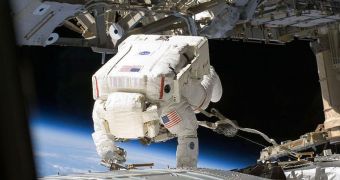A team of researchers announces the development of a new instrument, that is capable of simulating the experience of reentering Earth's atmosphere by using electrical currents.
Willing participants or pilots are subjected to small electrical zaps in a special area behind the ears, and the scientists who created the new simulation method say that this small inconvenience is capable of giving people a clue as to how the dizzying experience of atmospheric reentry looks and feels like.
“You can train for spaceflight tasks under normal conditions on Earth, but that will not give you an indication of what an astronaut feels like,” explains in a press release neurologist Steven Moore.
The expert is the leader of the research group that created the device, and he holds an appointment at the Mount Sinai School of Medicine, in New York City.
“The galvanic vestibular stimulation system will make mission simulations more realistic. This will be quite useful in training, especially for astronauts that haven’t flown before,” he says further,
The researcher adds that the large electrodes the team uses in its experiments are capable of delivering up to 5 milliamp of electrical current to the heads of test participants.
The primary target of the current is the vestibular nerve, which is heavily used by the brain to establish the position the body has in space at any given time.
When it malfunctions, the brain receives mixed readings, and this is one of the main reasons why people who receive blows to the ear tend to lose their balance.
“The GVS stimulation of the nerves is making the simulator pilots think the spacecraft is moving around. We are happy with that result,” Moore says of the results his team obtained thus far.
In the experiments the group conducted, researchers analyzed the behavior of several NASA test pilots and US Air Force pilots. Each of the participants flew 16 shuttle landing flights.
The investigation took place in California, at the NASA Ames Research Center's Vertical Motion Simulator (VMS), Wired reports.
Funding for the research was secured from the US National Space Biomedical Research Institute.
After all 12 test subjects completed their flights, the Sinai group analyzed the data obtained with the VMS in reference to telemetry readings collected during 100 real shuttle landings.
An estimated 20 percent of all shuttle landings were found to have deviated from optimal range of touchdown speed and sink rate.
The same type of errors were discovered when GVS was applied to the heads of test pilots.

 14 DAY TRIAL //
14 DAY TRIAL //